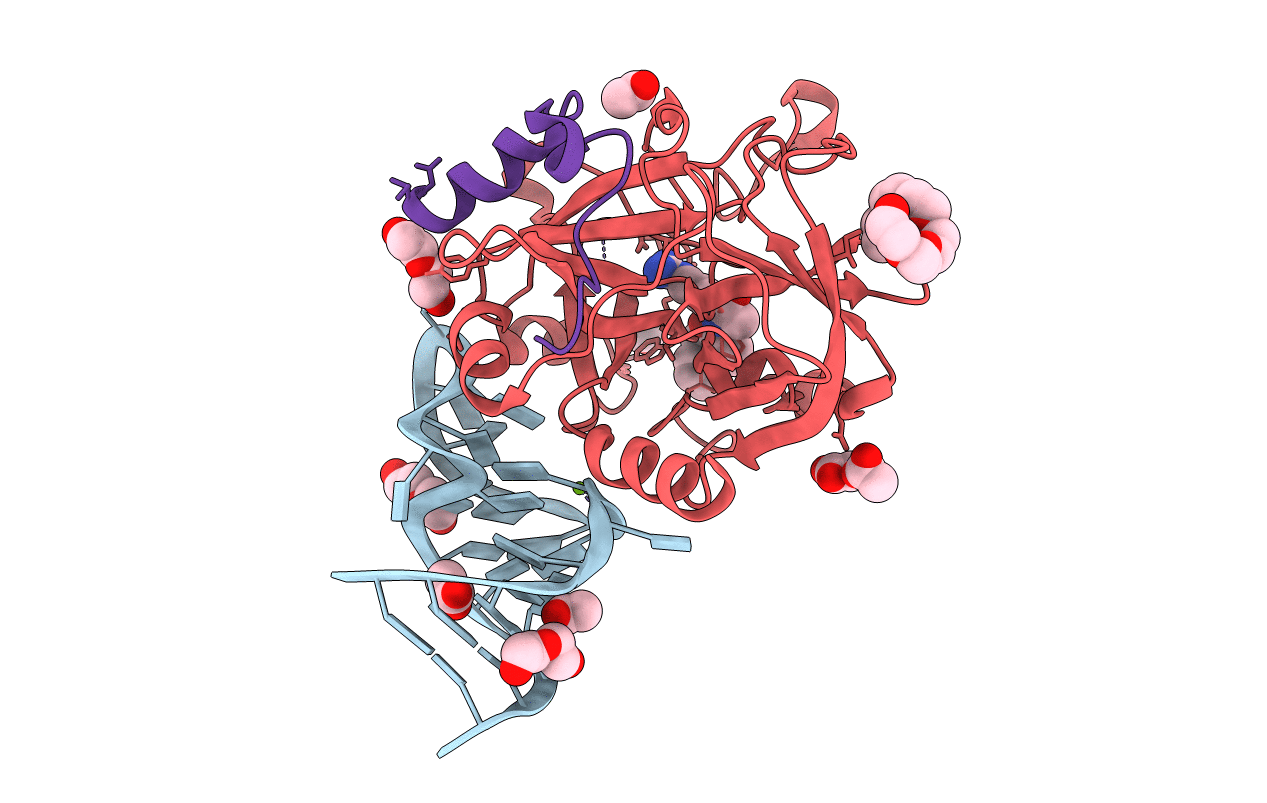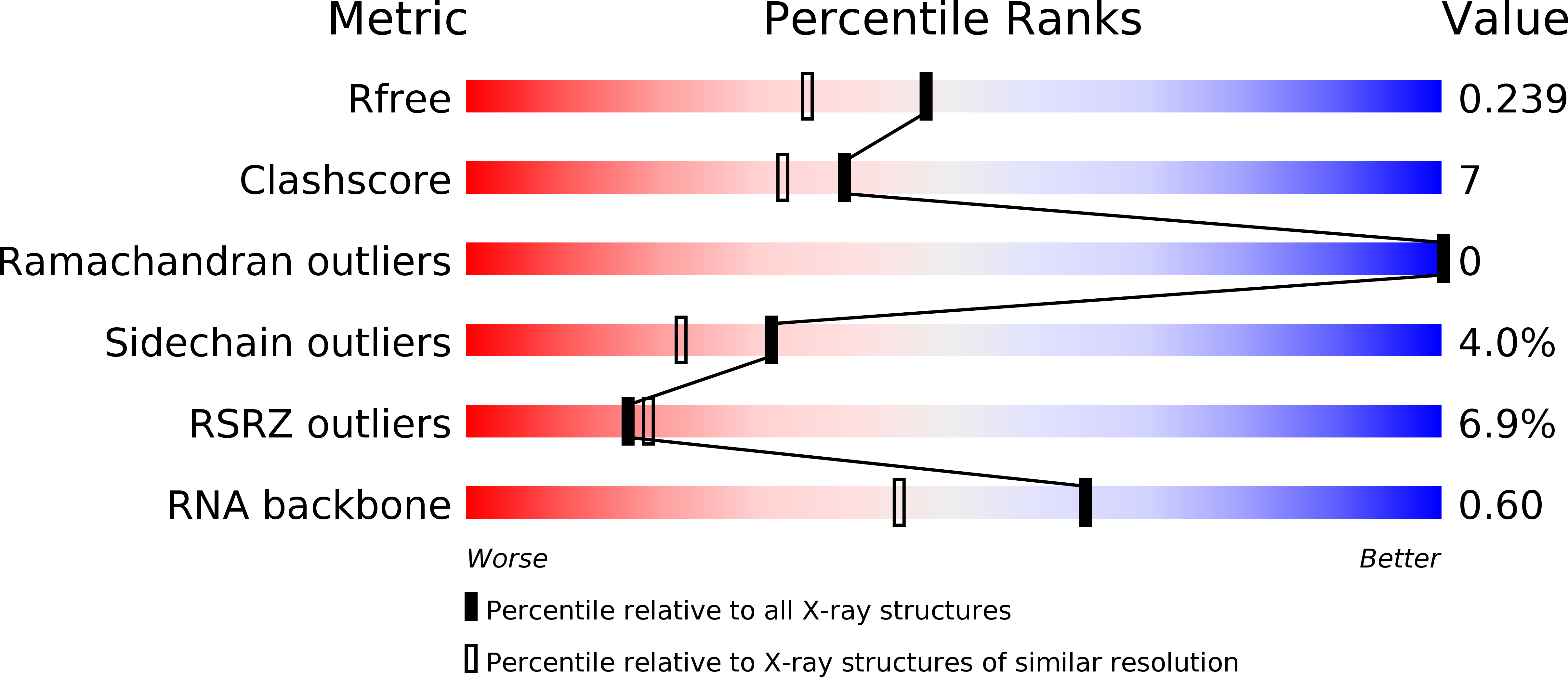
Deposition Date
2008-06-04
Release Date
2008-11-11
Last Version Date
2024-11-20
Entry Detail
PDB ID:
3DD2
Keywords:
Title:
Crystal structure of an RNA aptamer bound to human thrombin
Biological Source:
Source Organism:
Homo sapiens (Taxon ID: 9606)
Method Details:
Experimental Method:
Resolution:
1.90 Å
R-Value Free:
0.25
R-Value Work:
0.20
Space Group:
P 21 21 2


